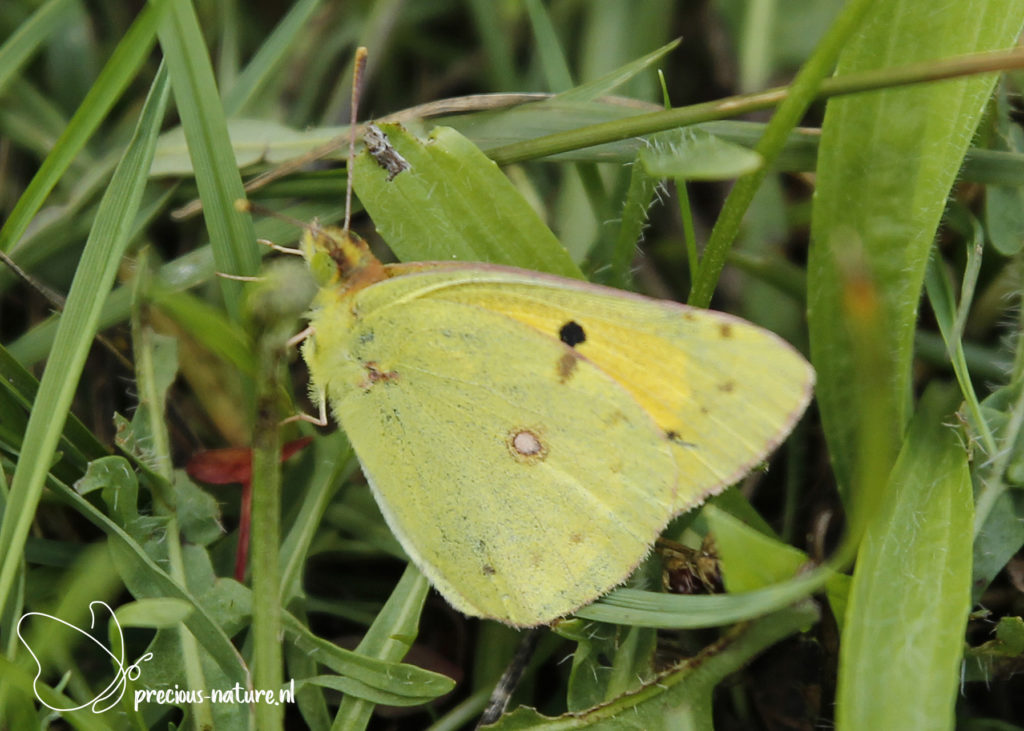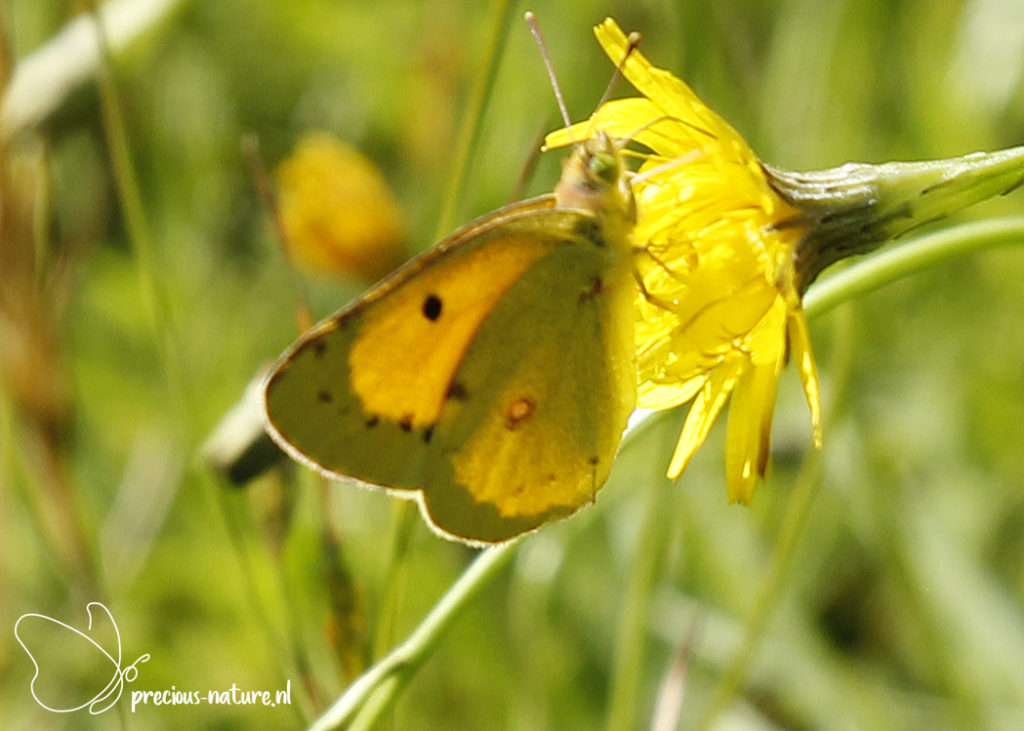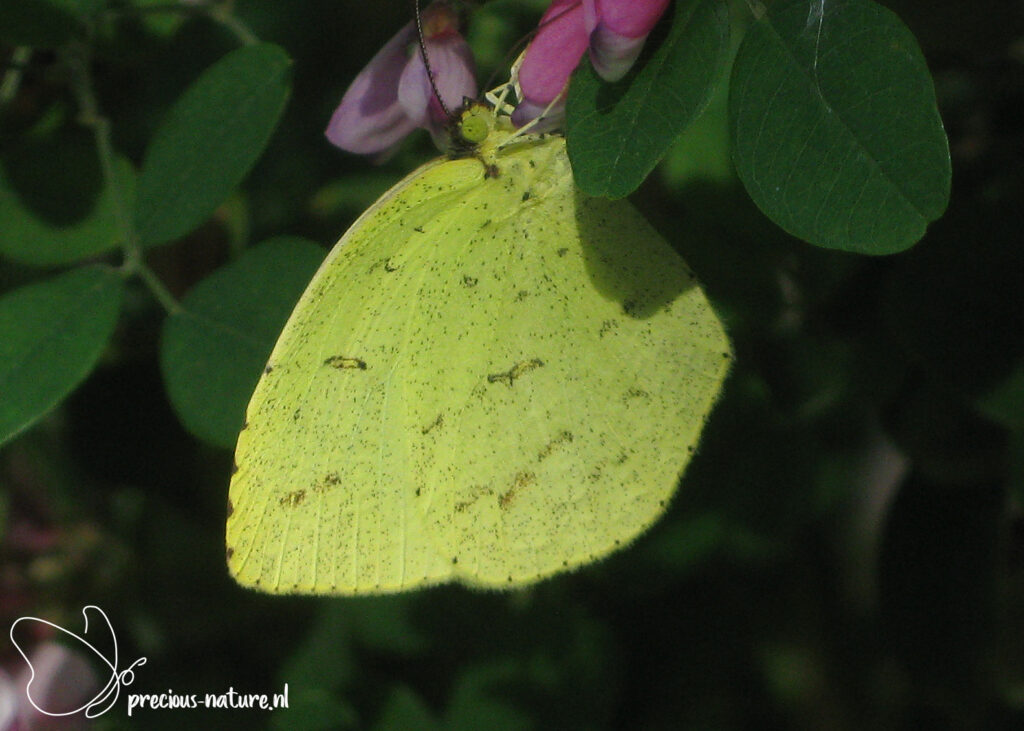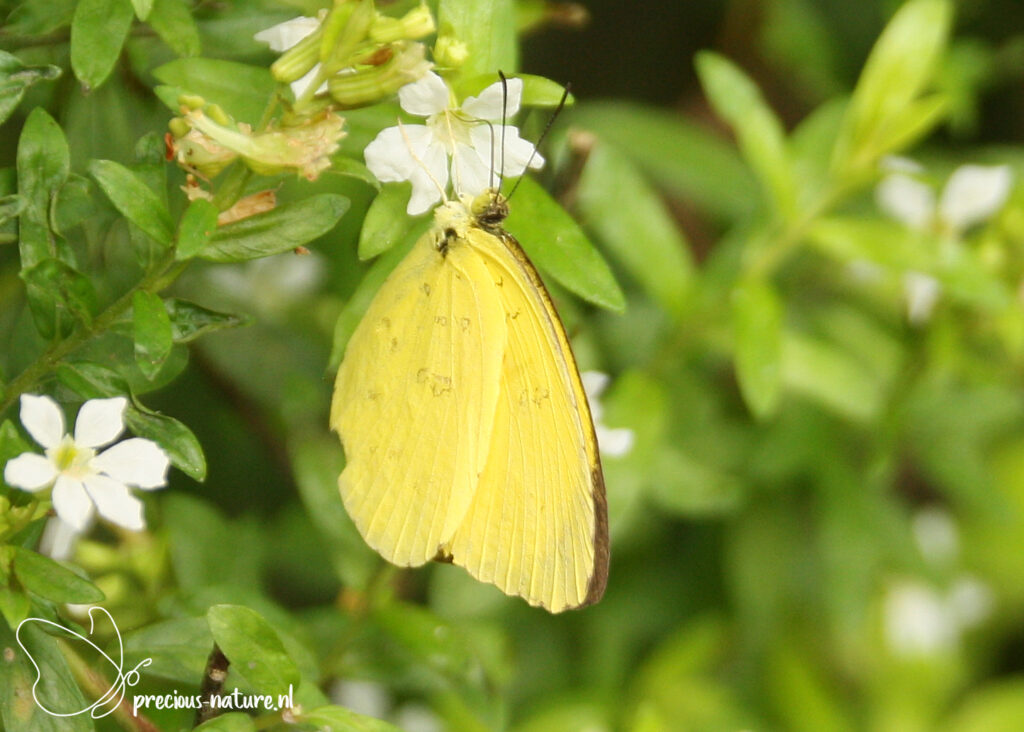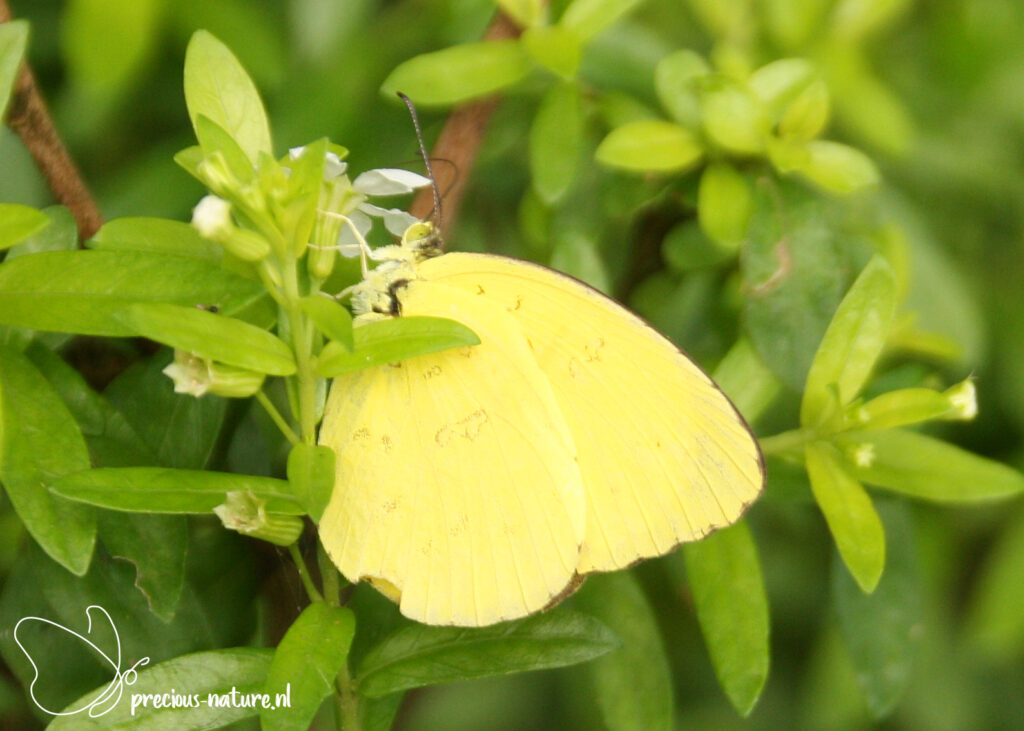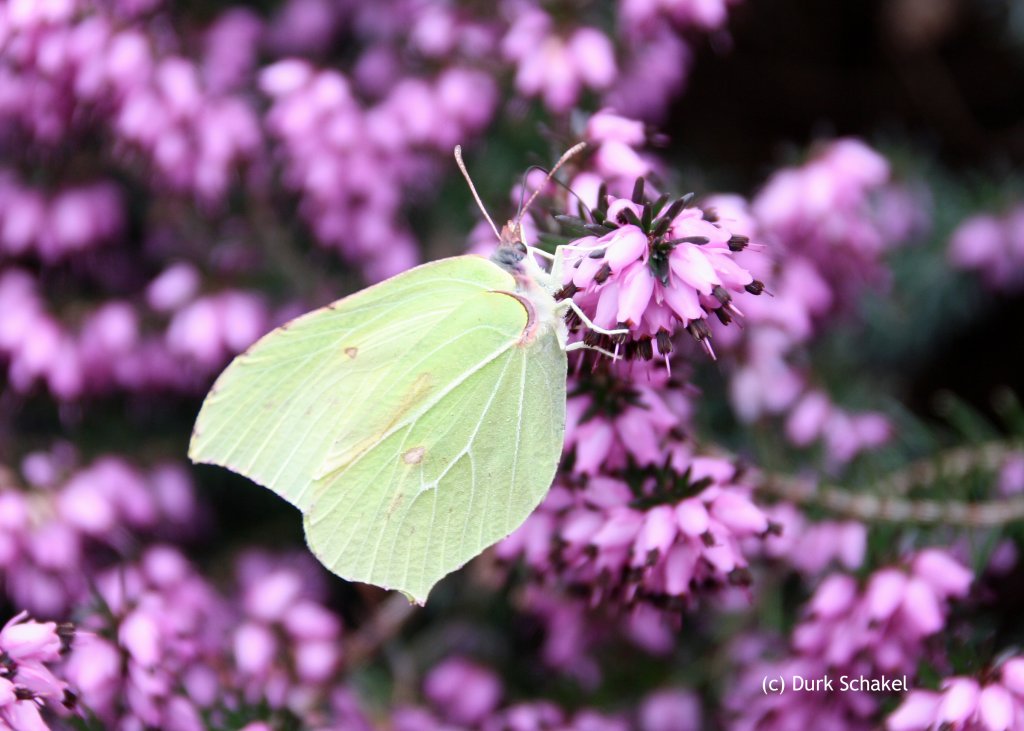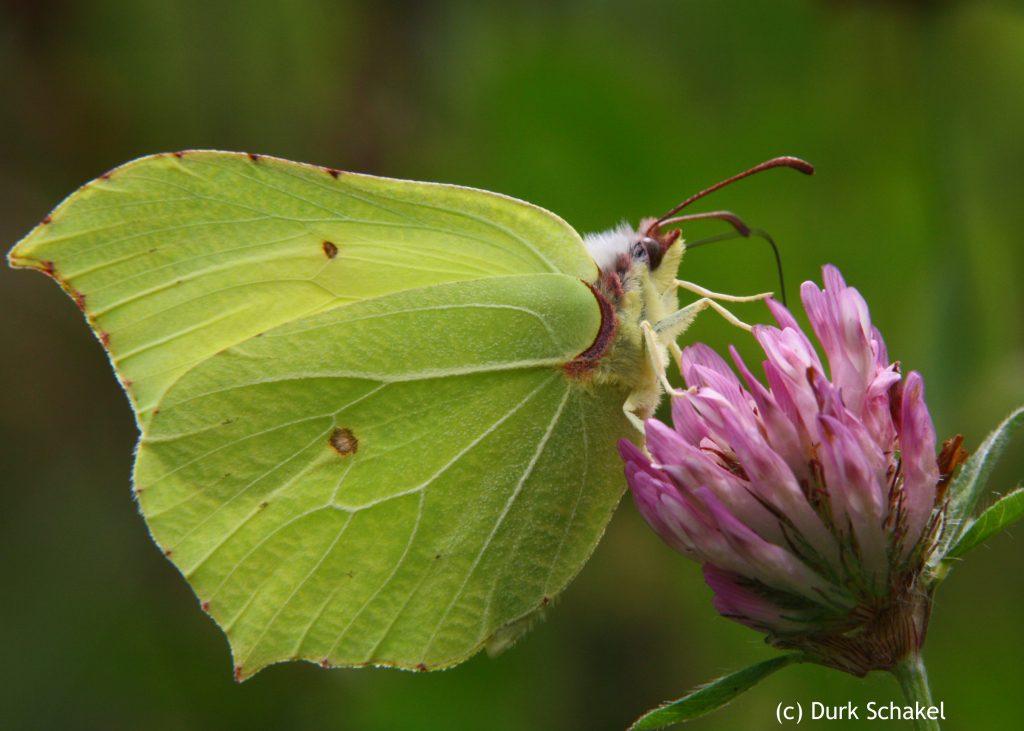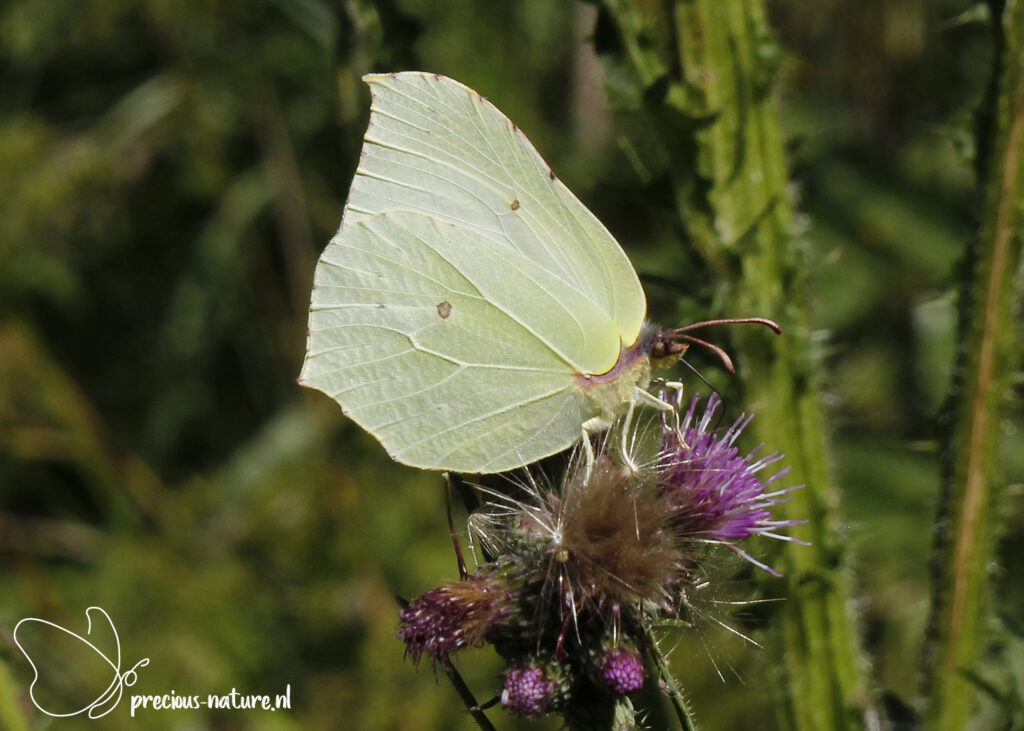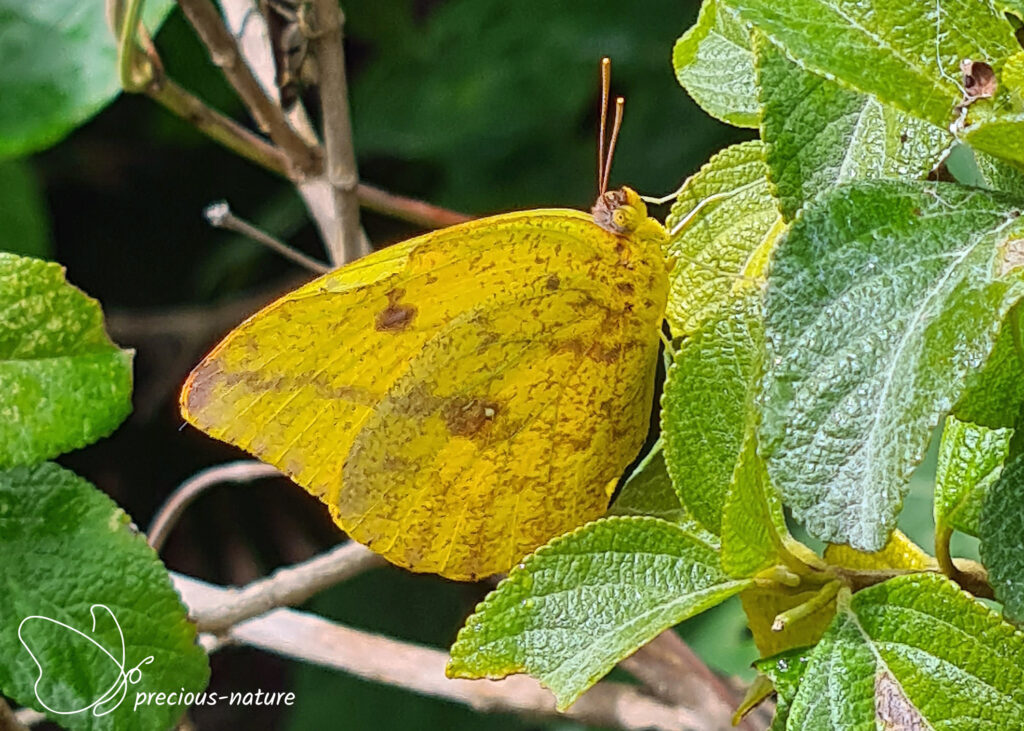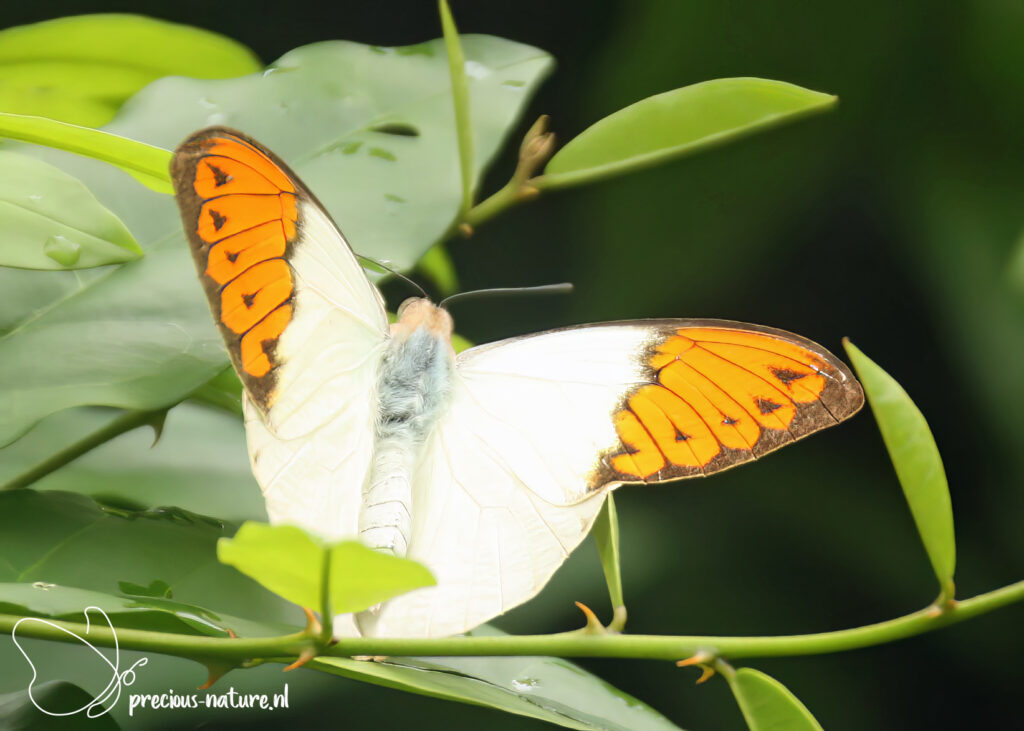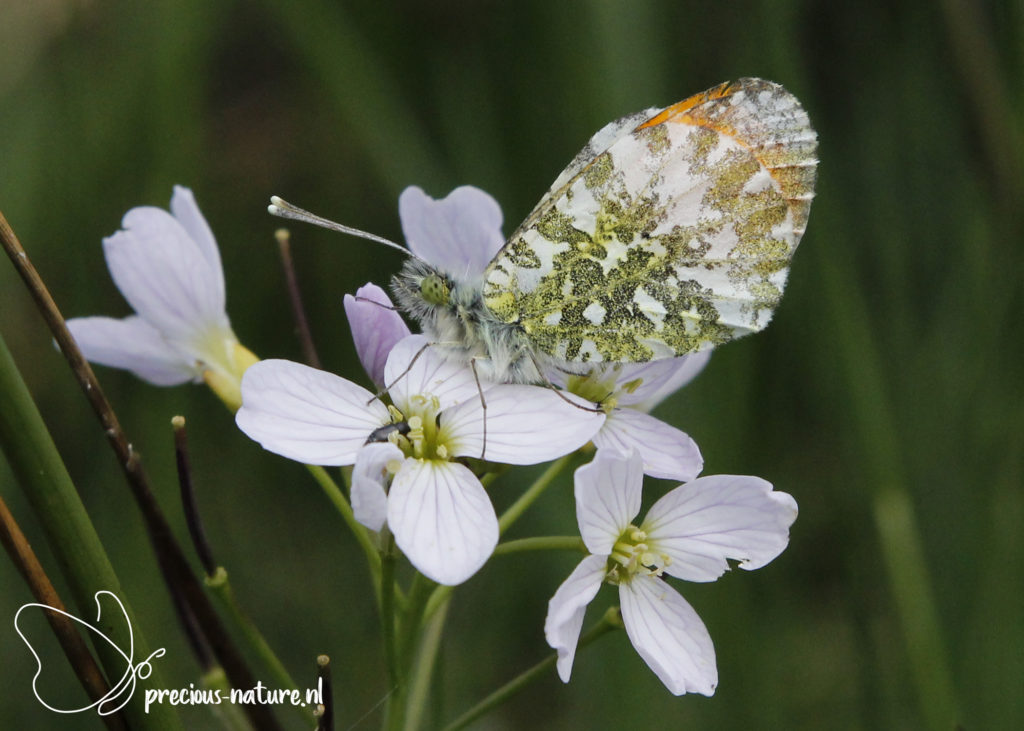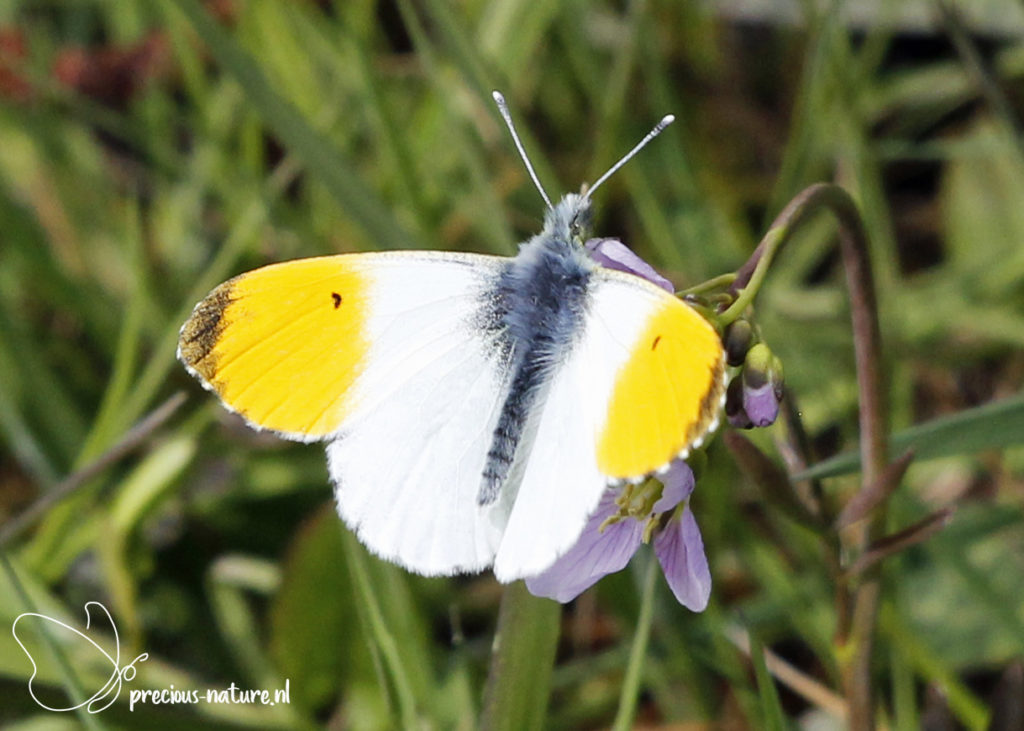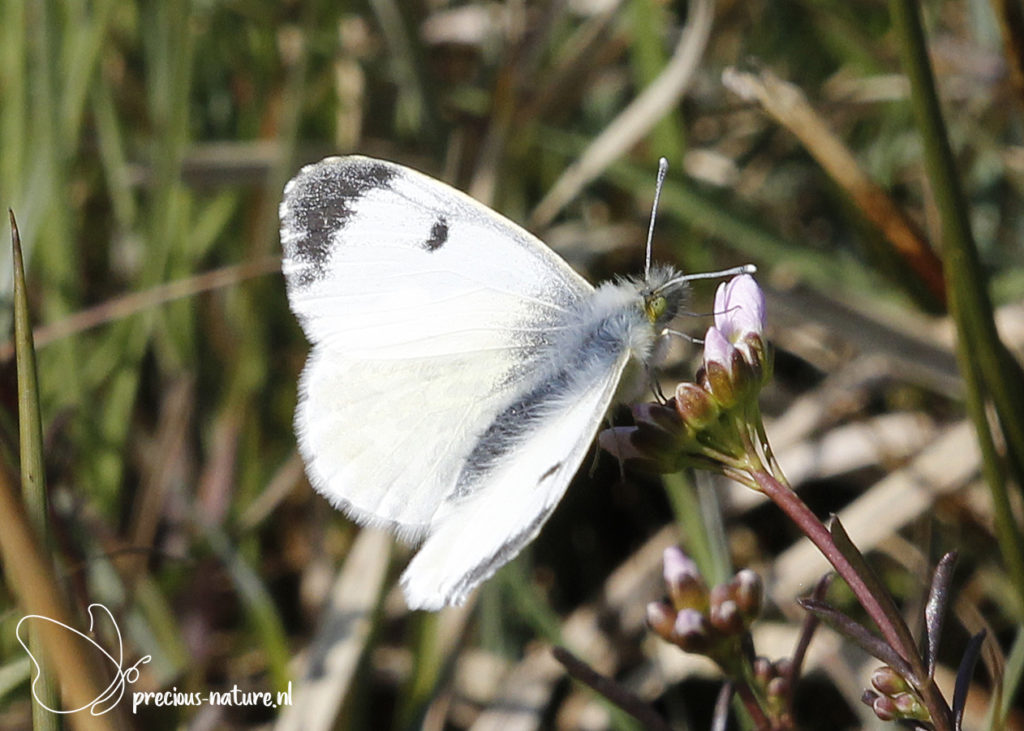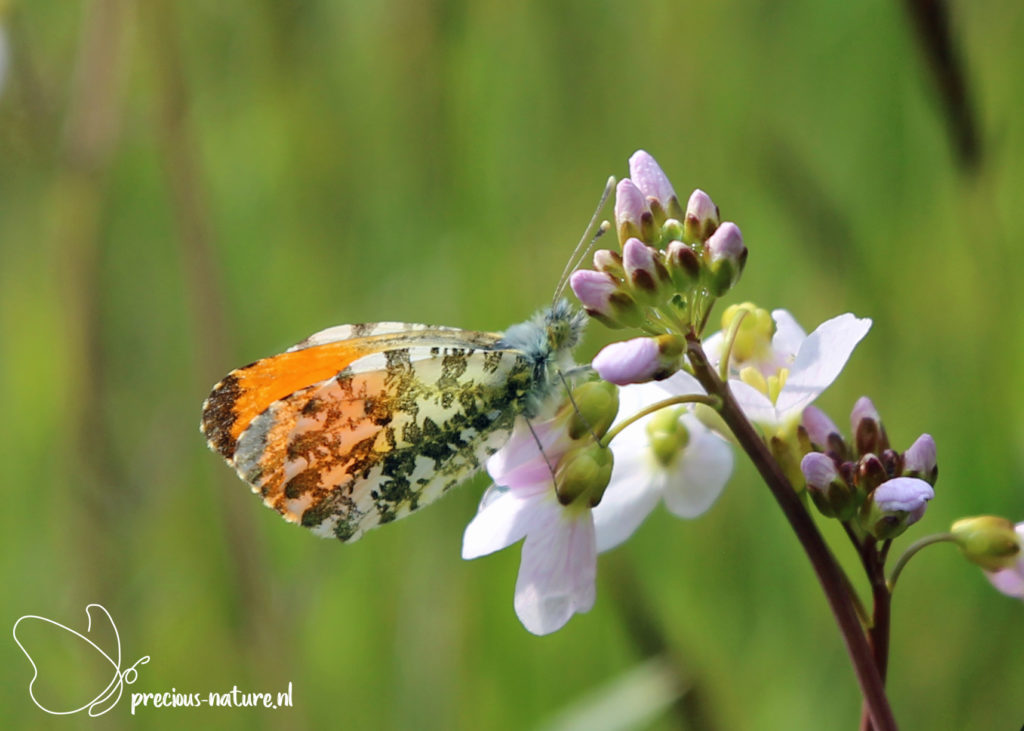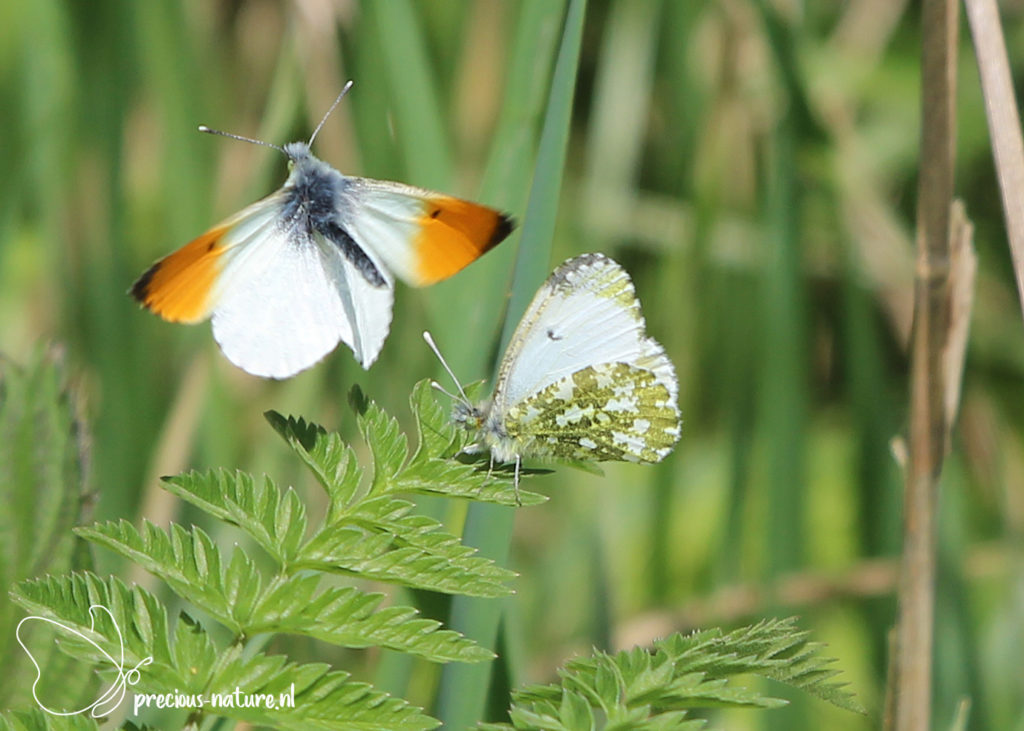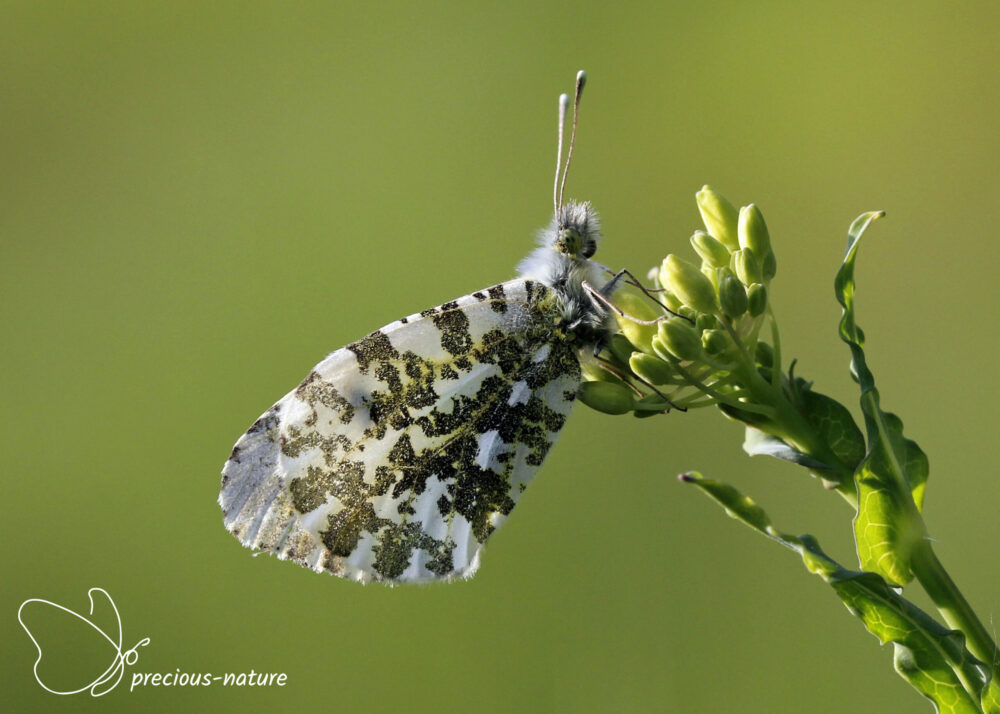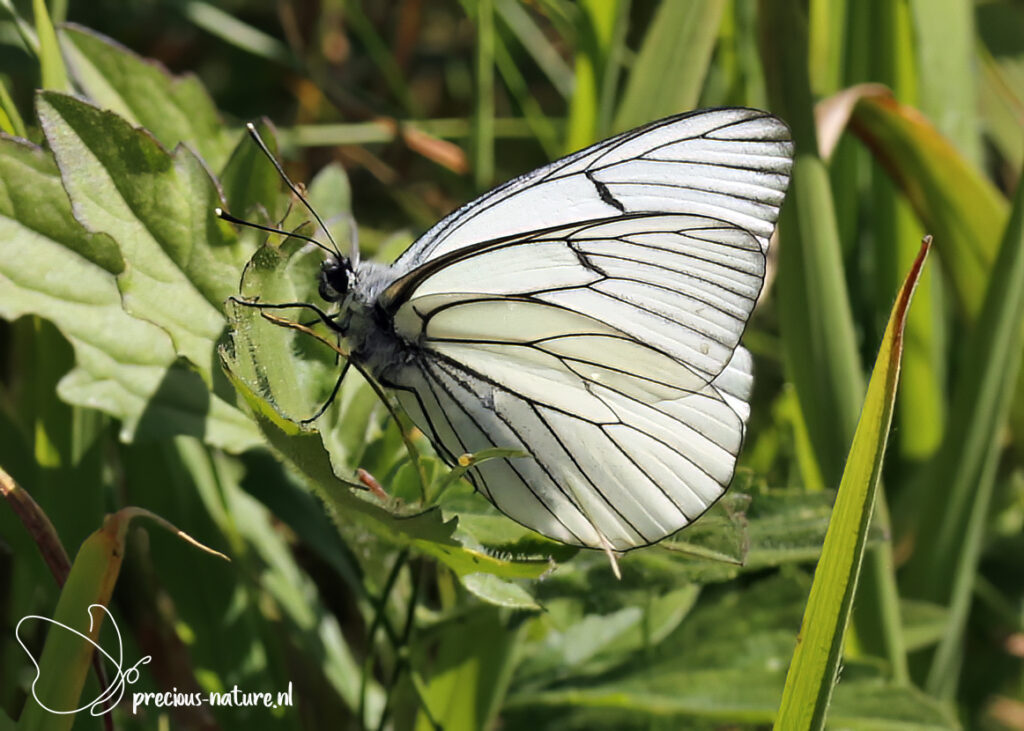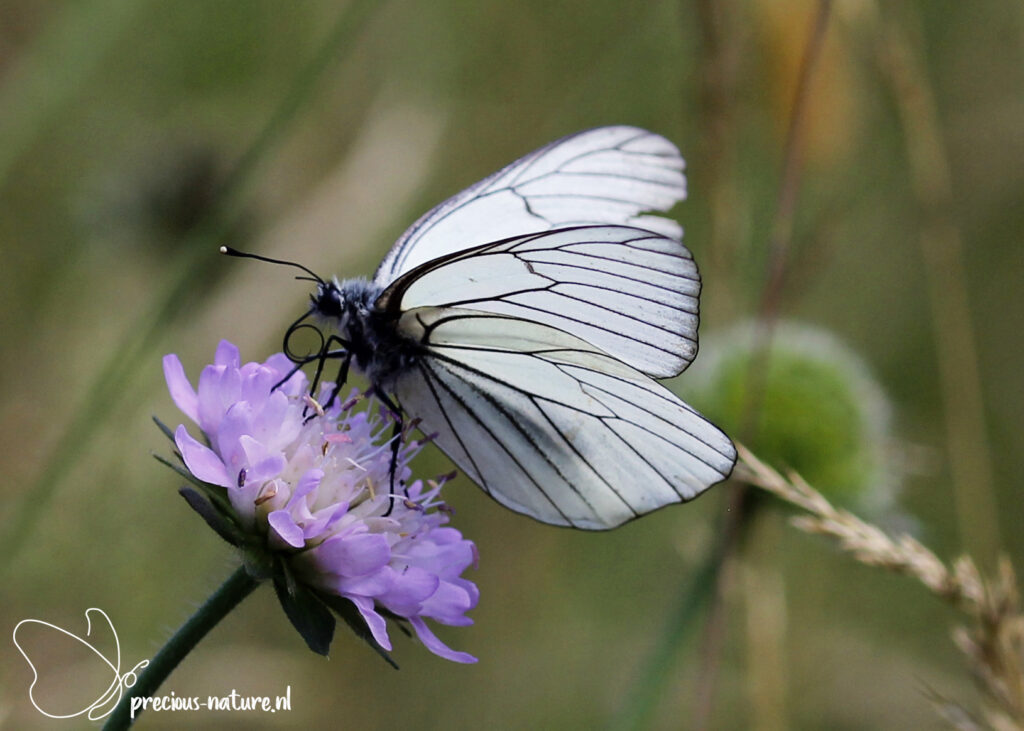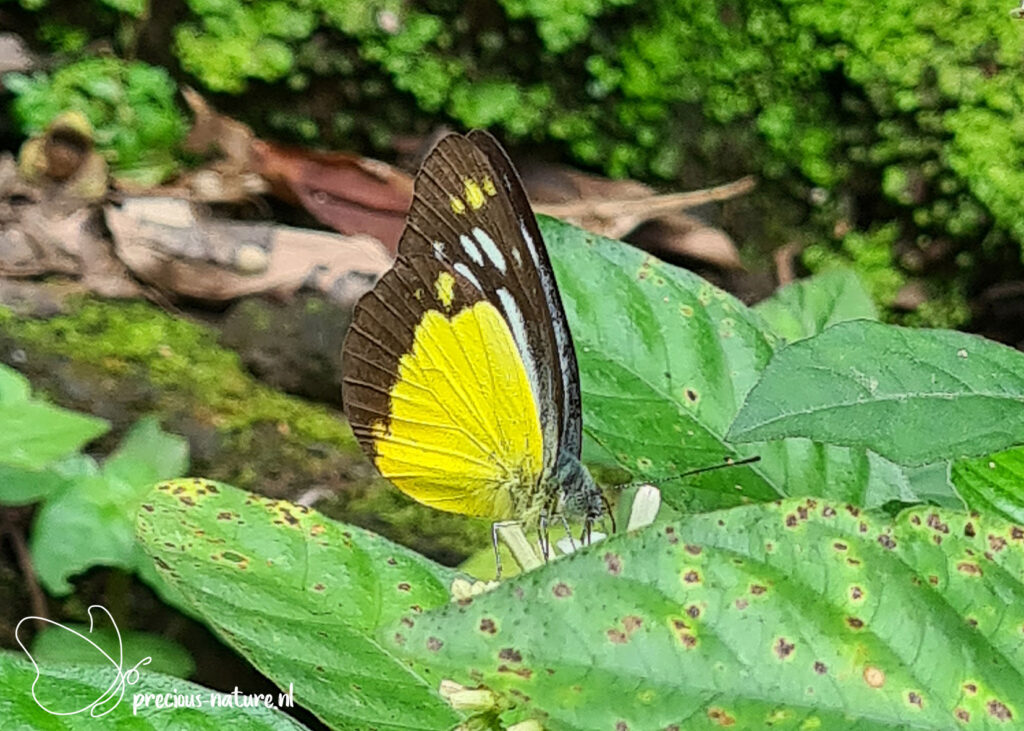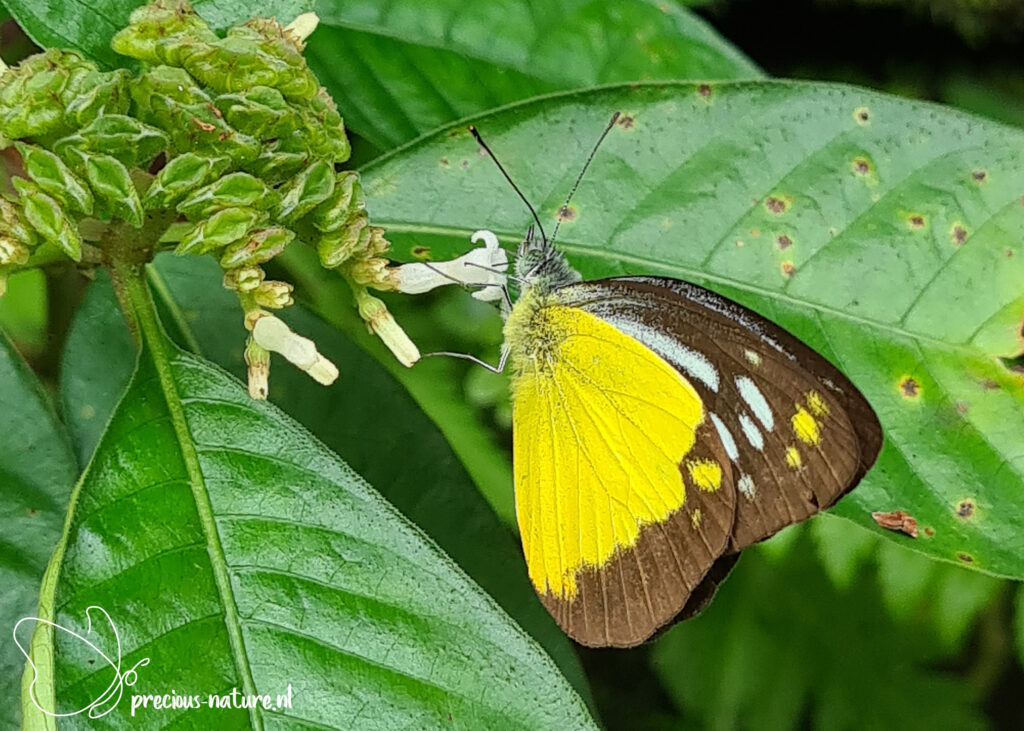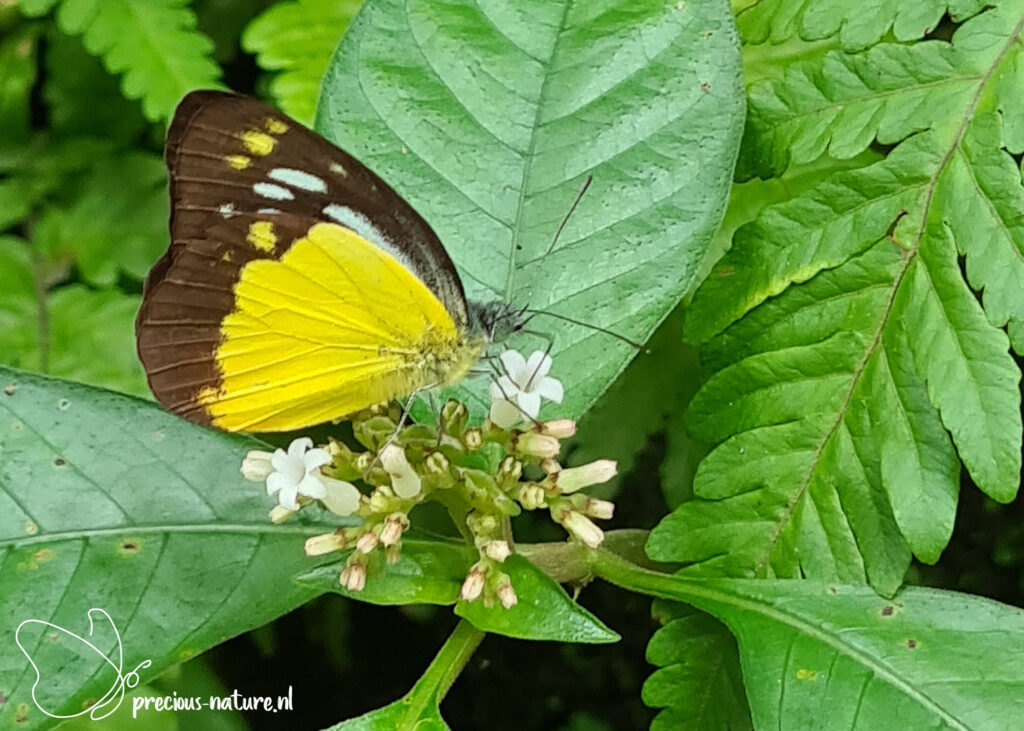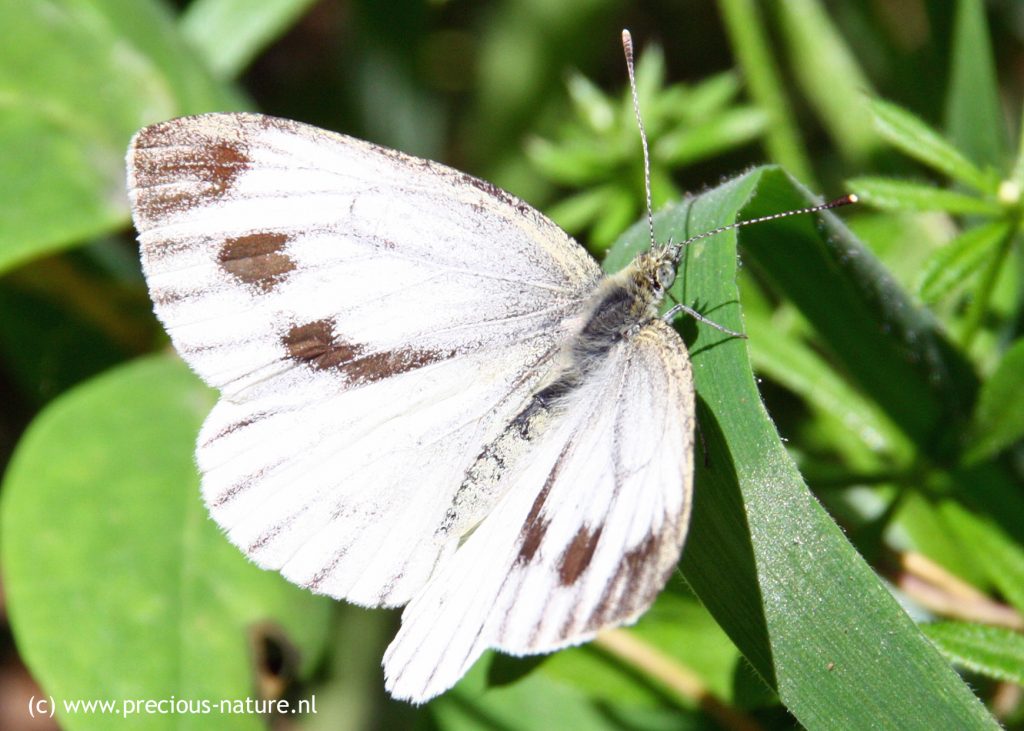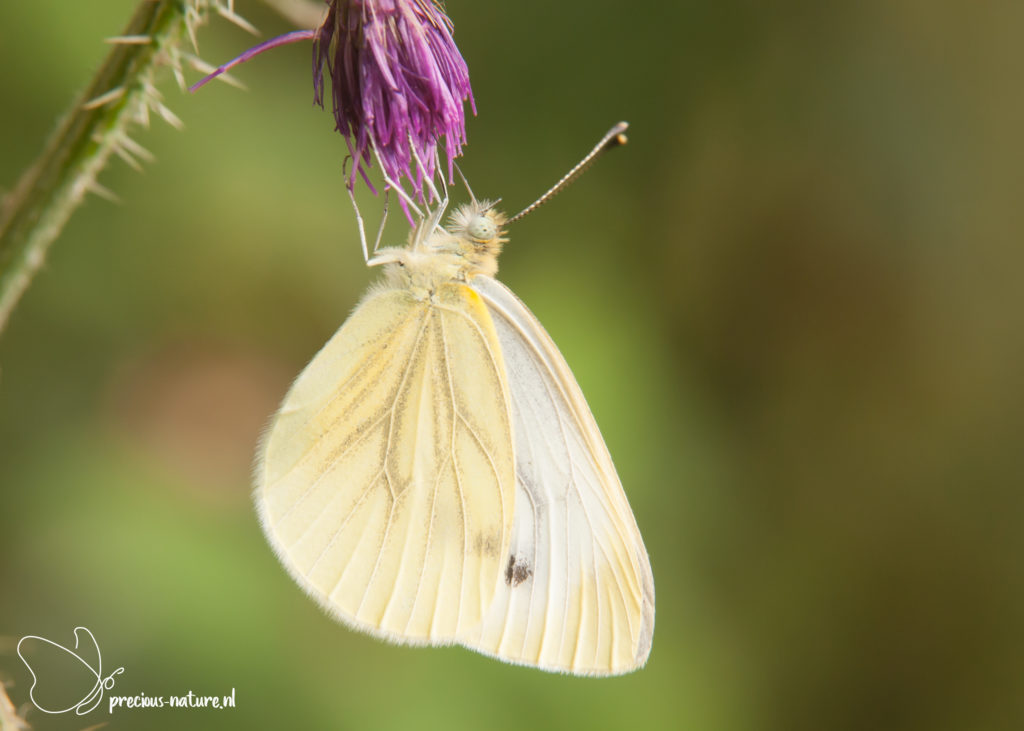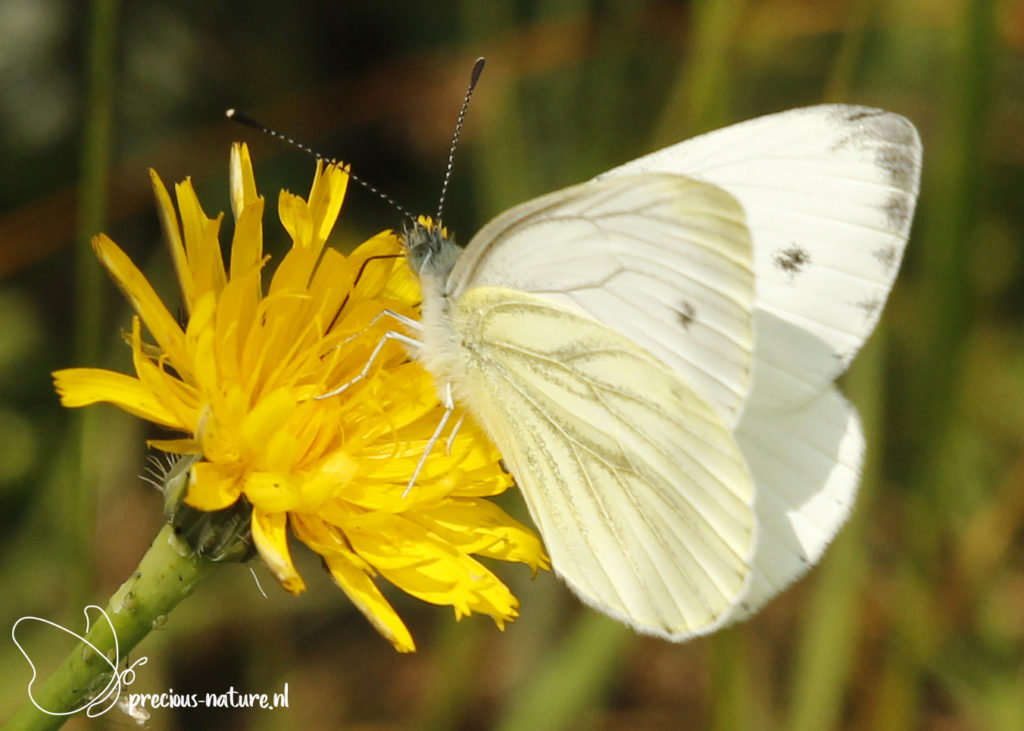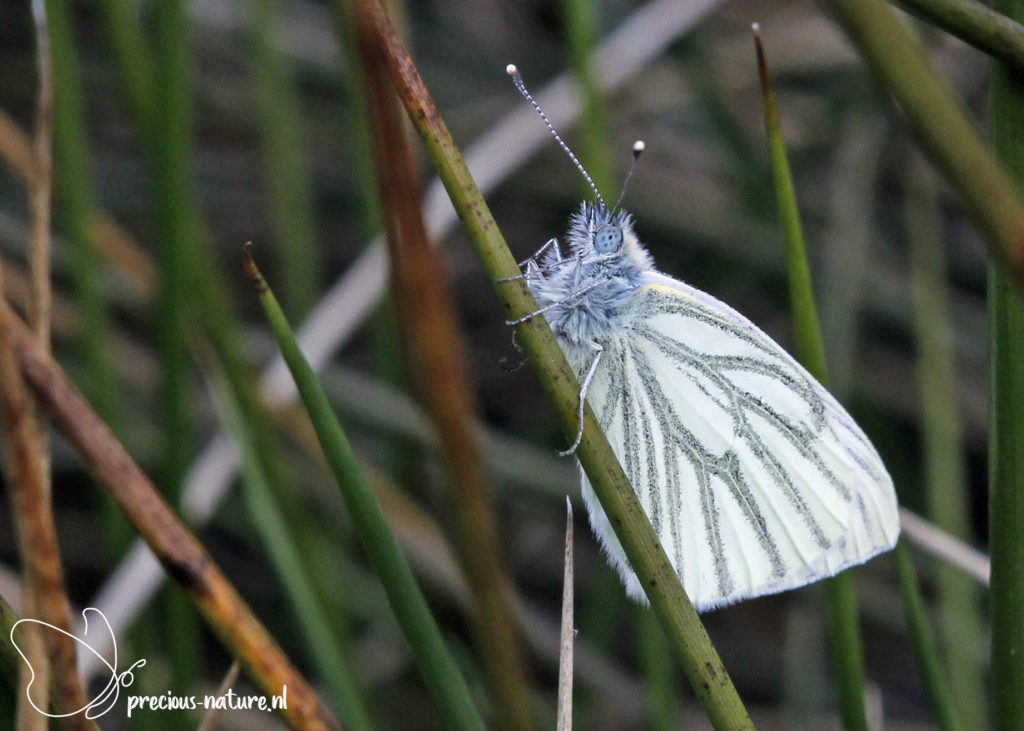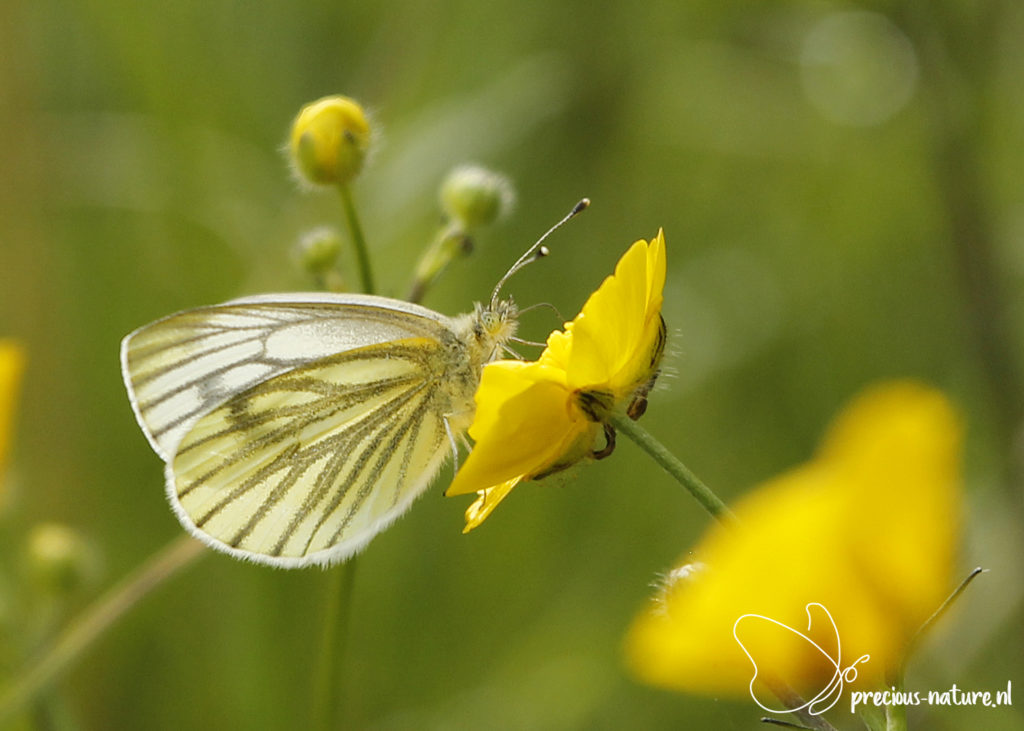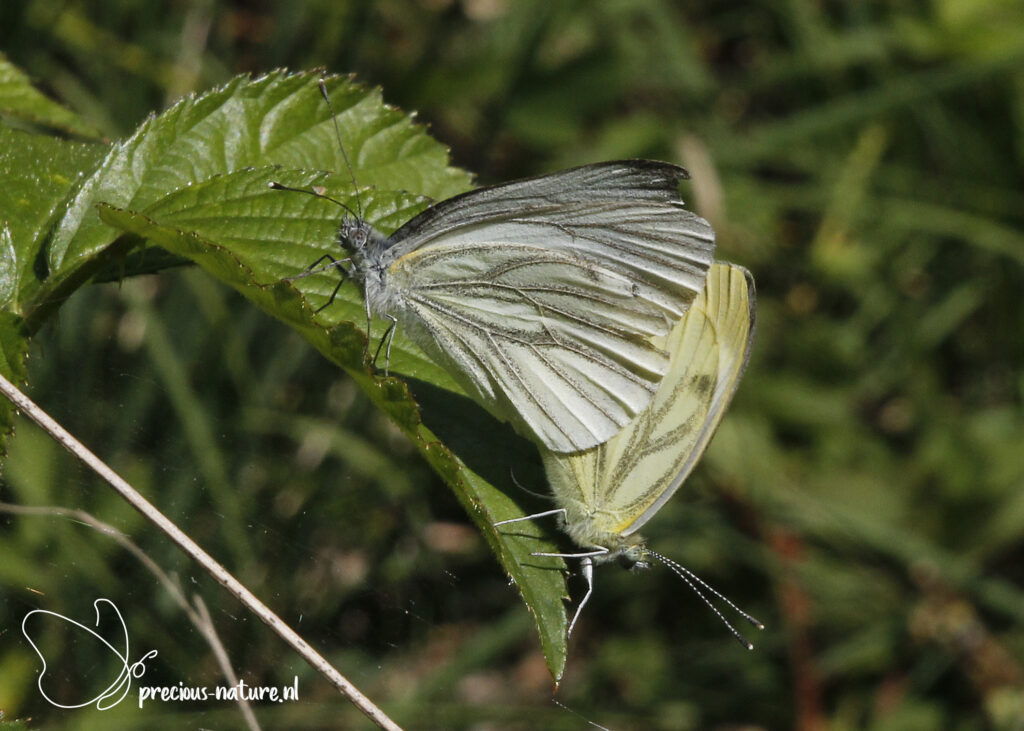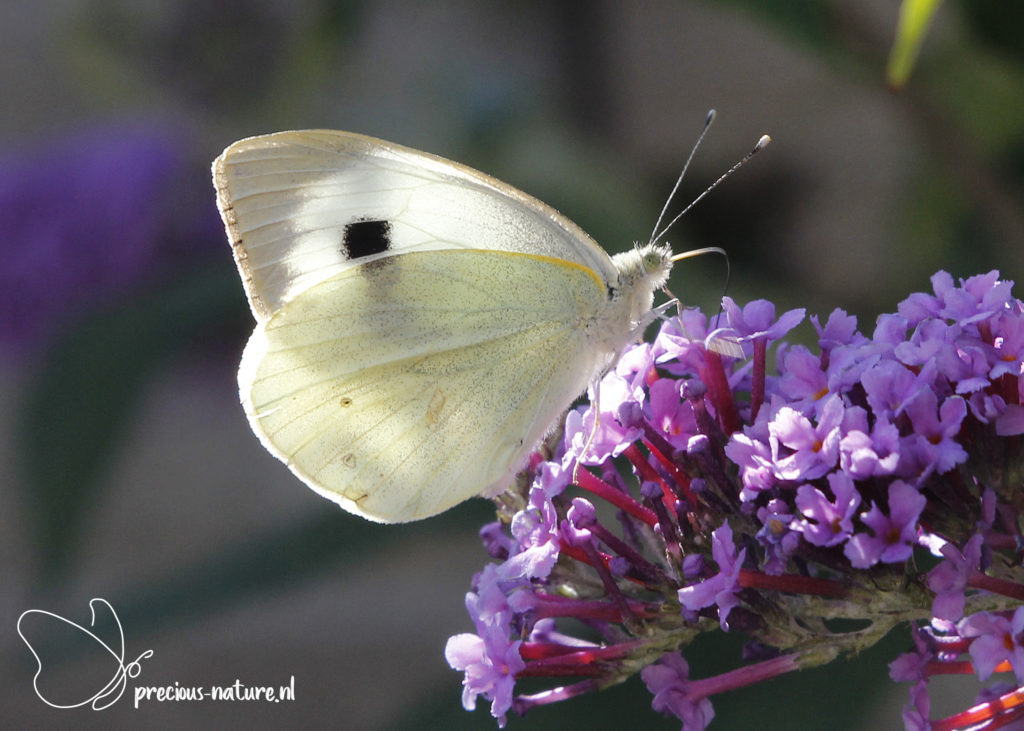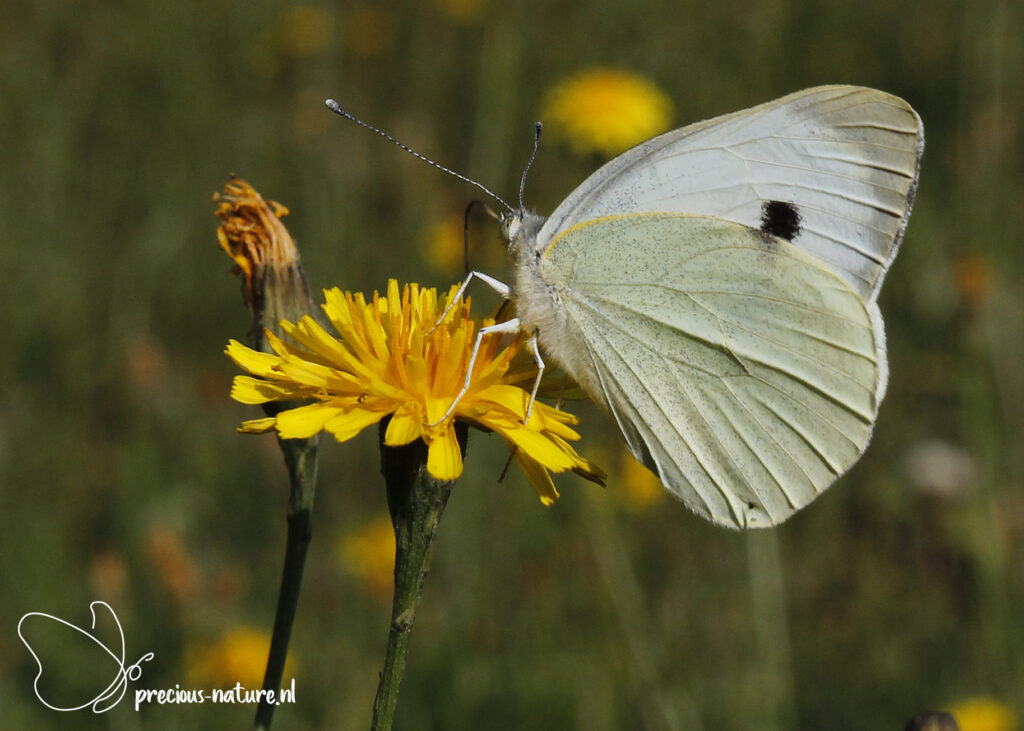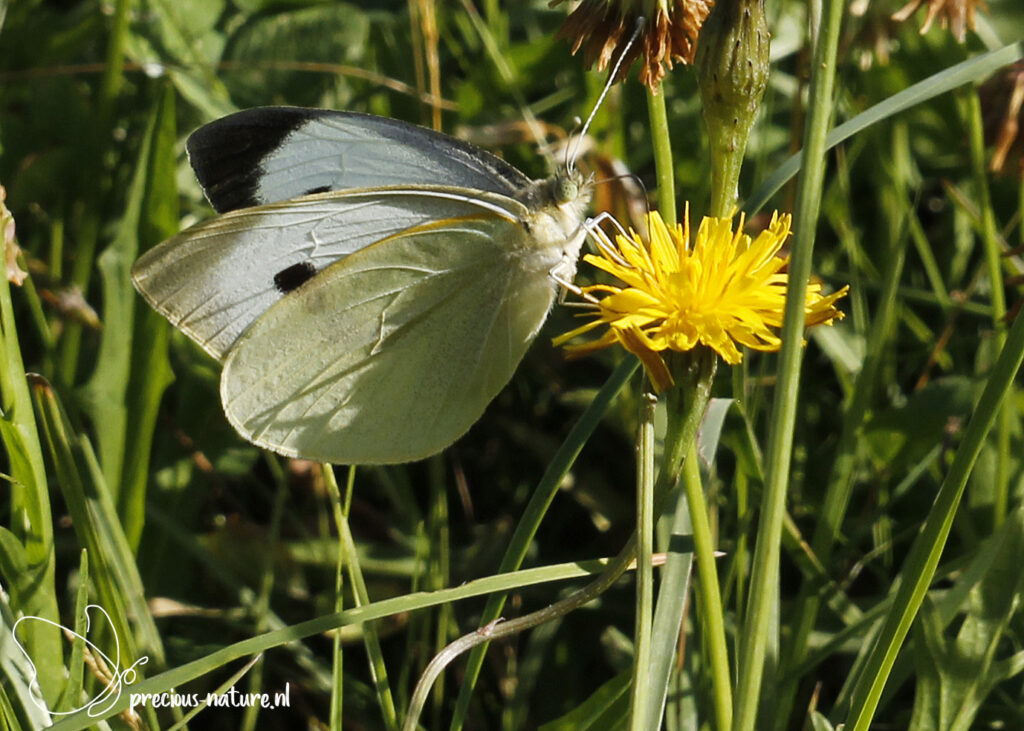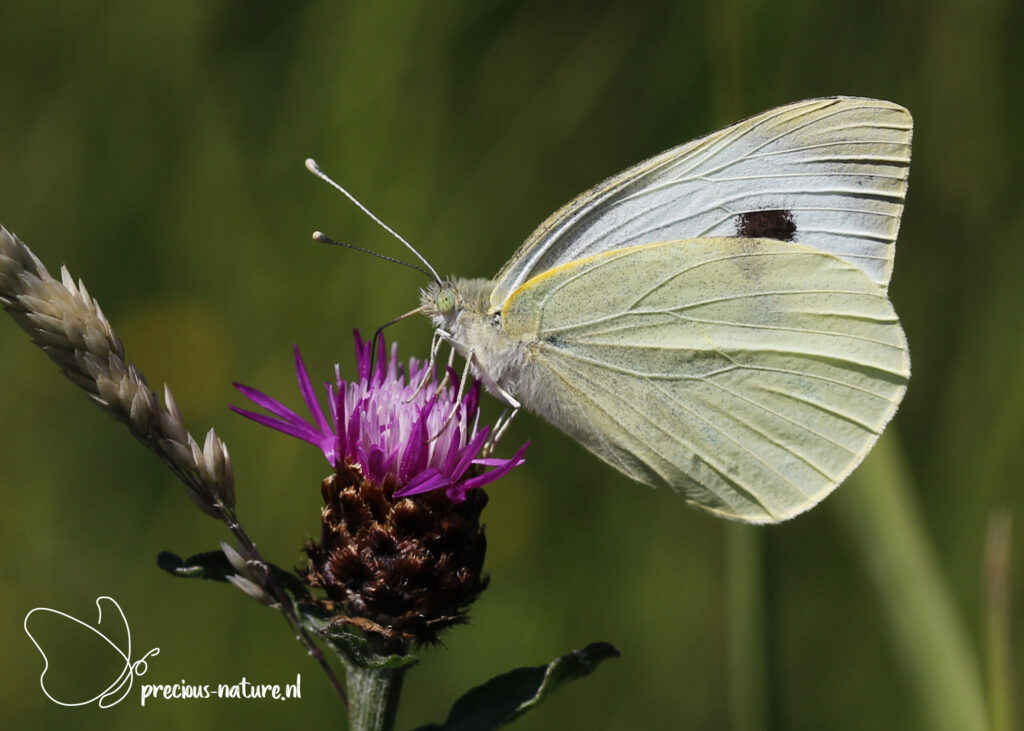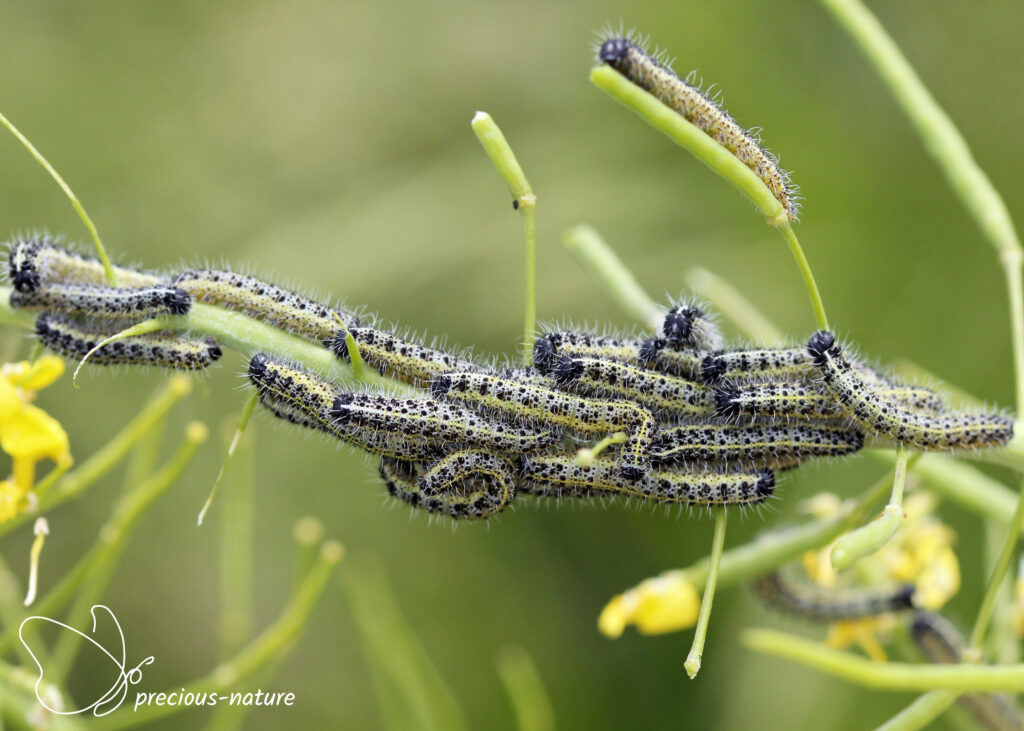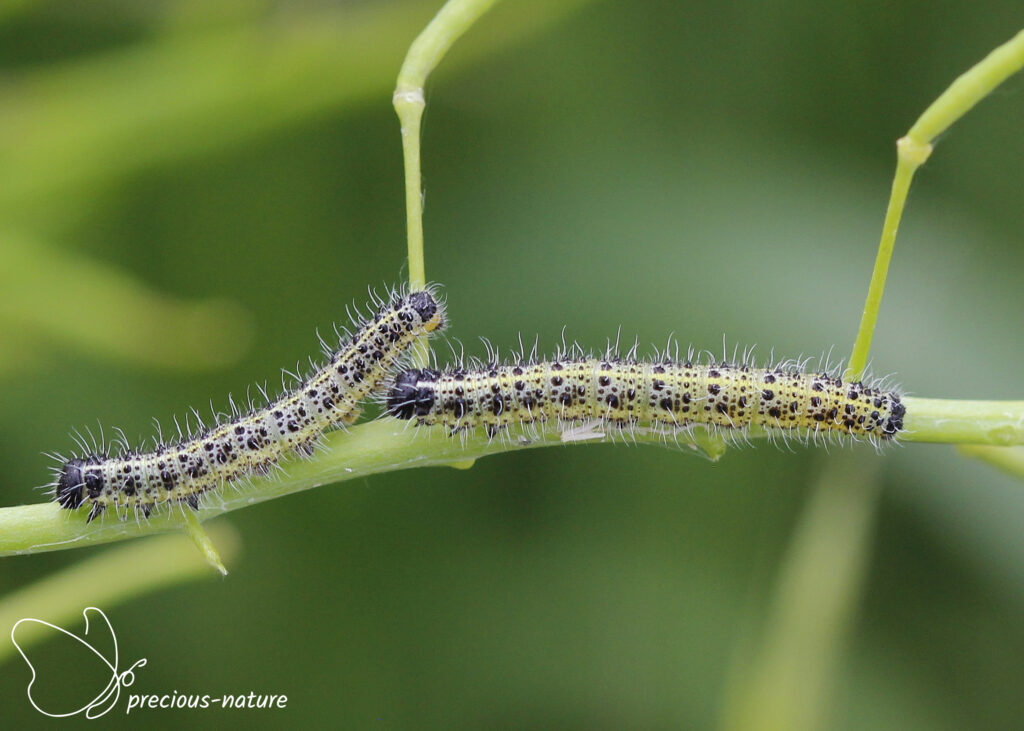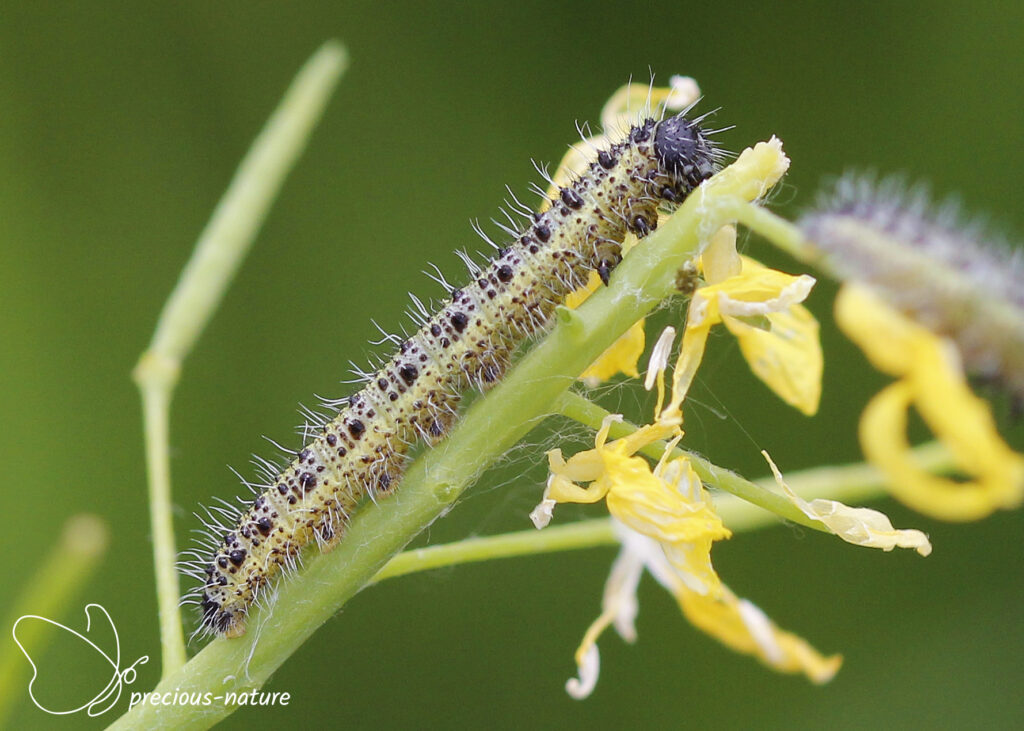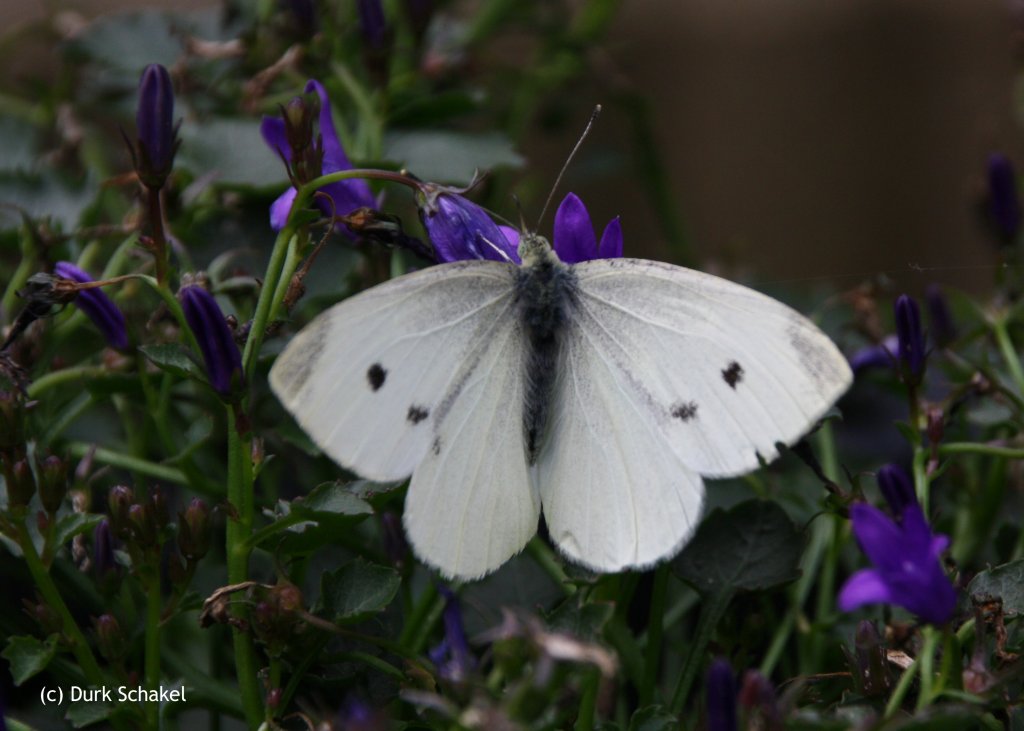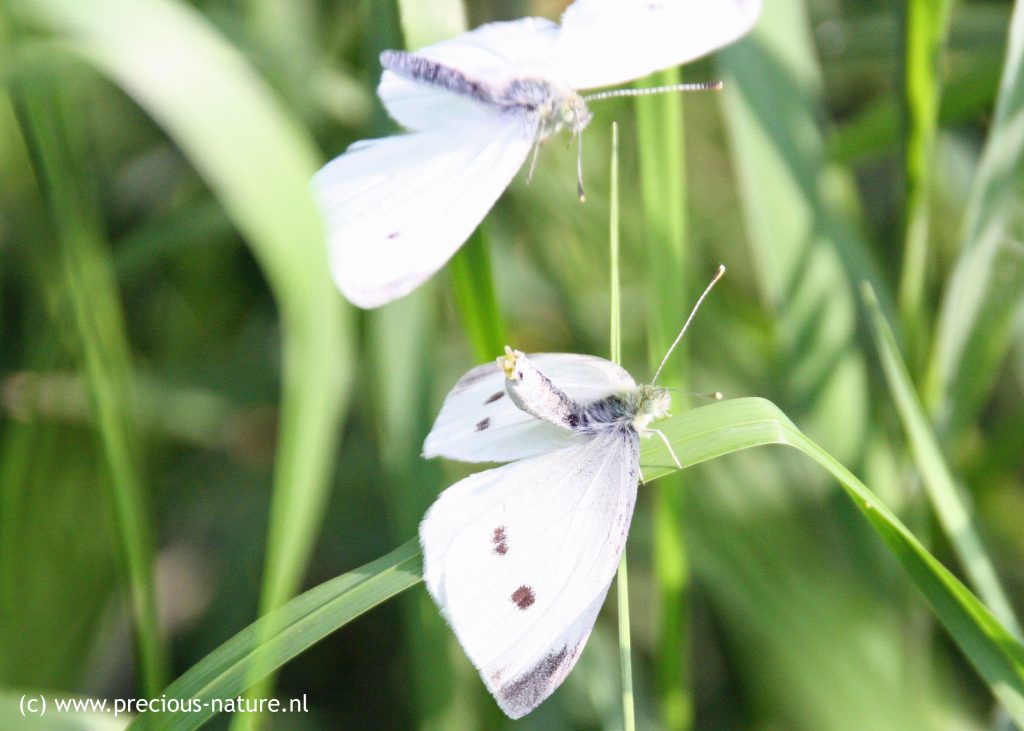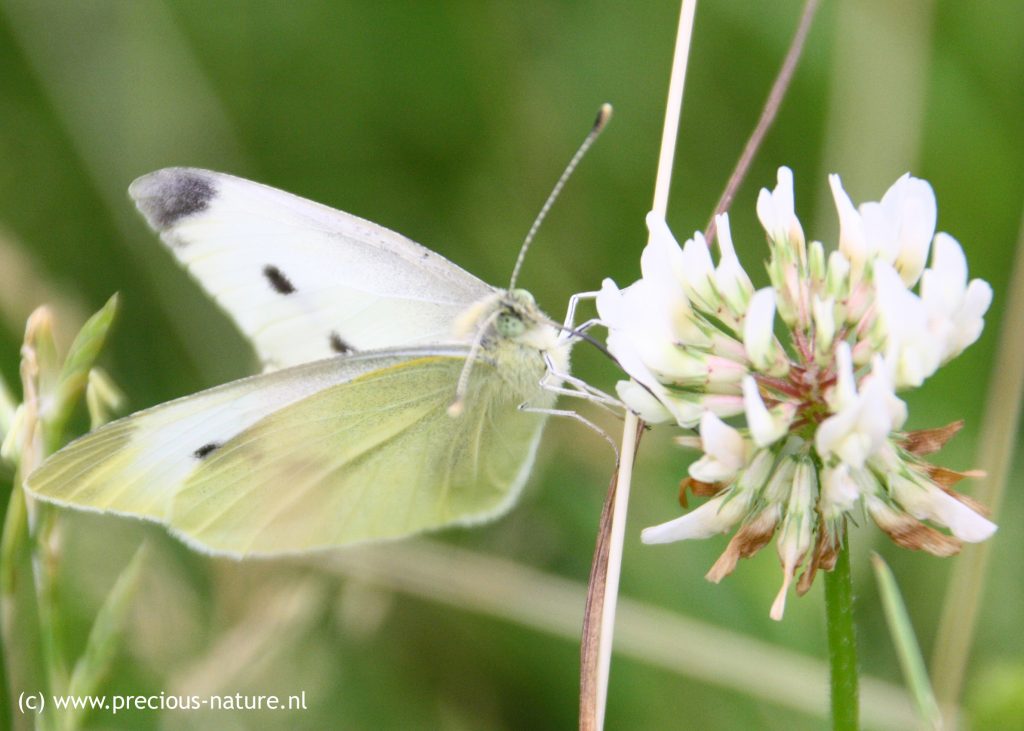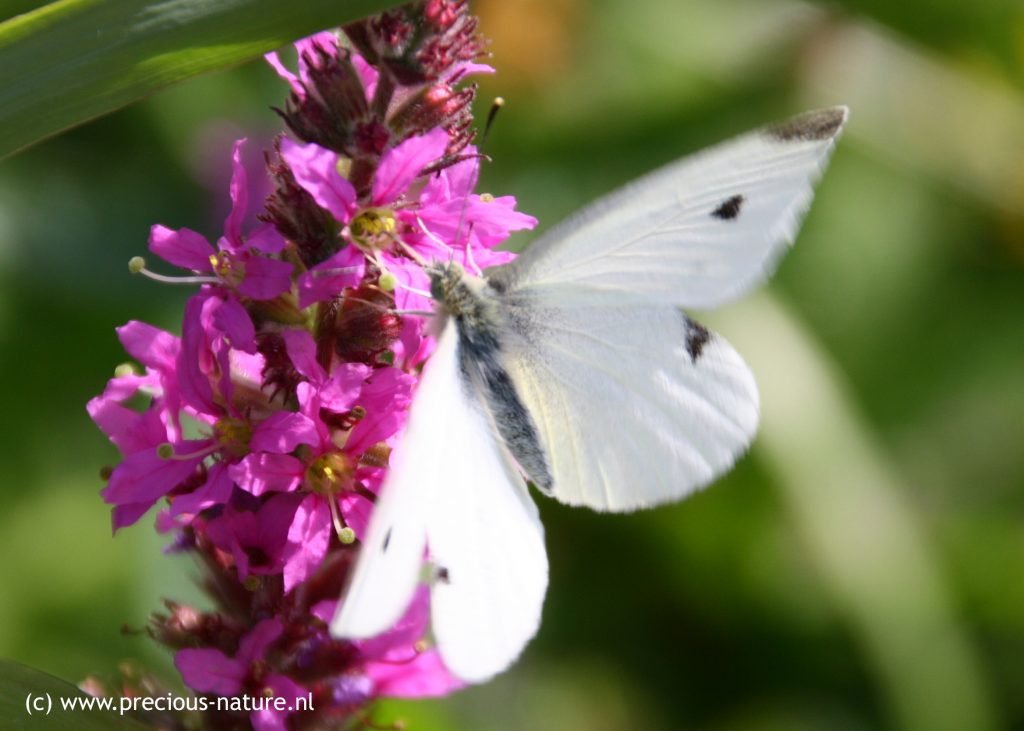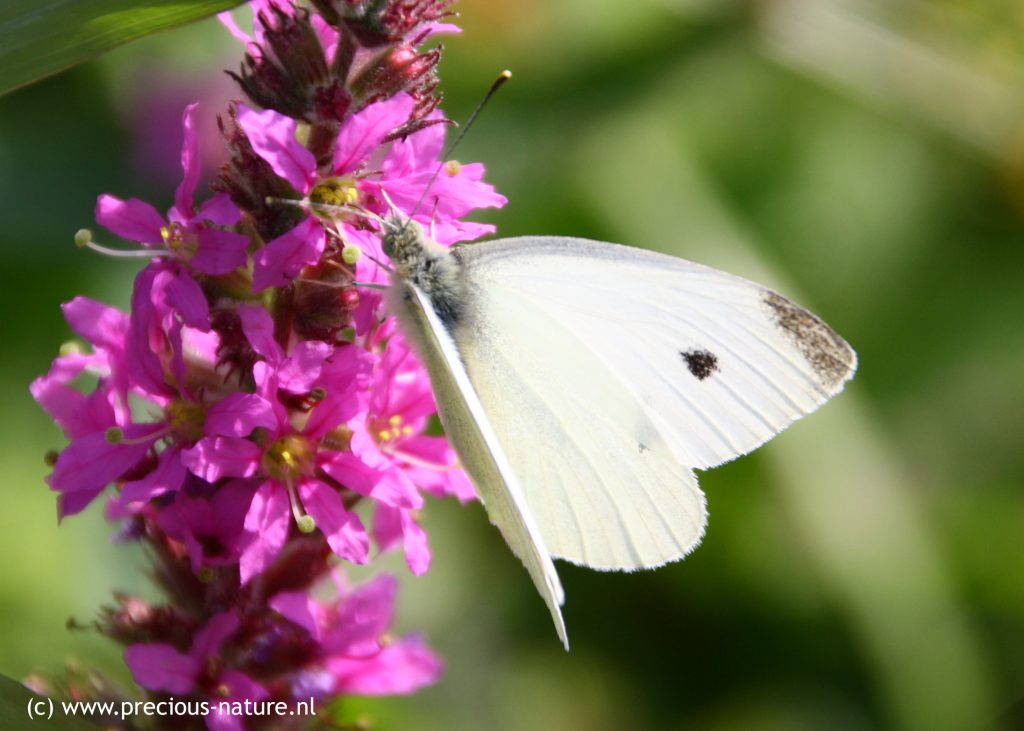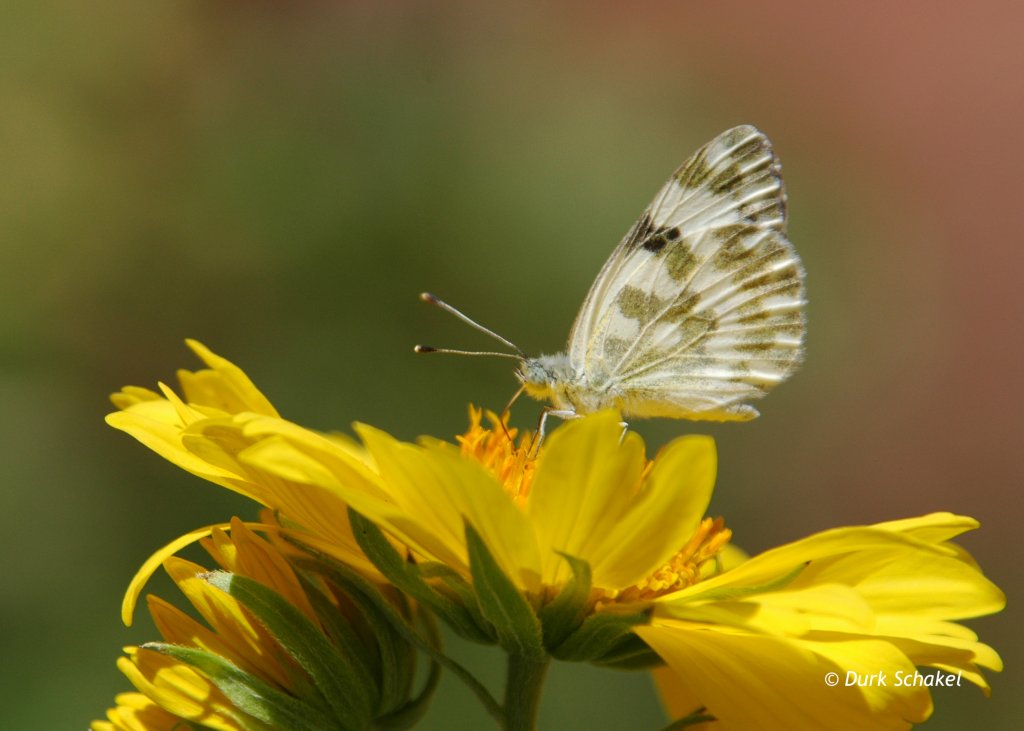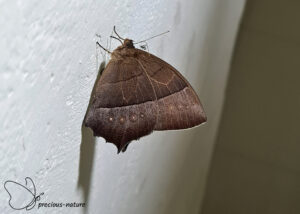The Pieridae, or the whites and sulphurs, do not resemble their name. This butterfly family consists of butterflies with a wide variety of colours and some species have a striking wing marking. Although mainly yellow, white and orange occur, you also see red and black. The wingspan is usually around 50 mm and all legs have forked claws. Males and females often differ in appearance. In terms of protection against certain enemies, the whites have a special technique. Although birds see them, they are careful to eat them. The whites absorbed toxins from the host plant when the caterpillar ate it. In the case of the Large and Small White, these are mustard oils from the cruciferous vegetables. The birds are therefore careful to eat them and should that happen they quickly spit them out. The Brimstone, which does not have these toxins, enjoys the fact that it looks a bit like a white and is, therefore, left alone during the flying period that corresponds to that of the whites.
Subfamily: Coliadinae
Tribe: Colias
Clouded Yellow – 2020 (NL)
(NCBI-index: 72248)
During a walk in an area where I often walk around, I was pleasantly surprised to see the Clouded Yellow (Colias crocea). This is a migratory butterfly that is not often seen except in the south of the Netherlands and in coastal areas. The top of the wing is orange-yellow and a broad brown-black band can be seen along the dorsum of both the fore- and hindwing. Light veins in this dark band can be seen in the male and orange-yellow spots in the female. The undersides of both wings are yellow with some light brown spots, the hindwing has a kind of greenish speckling. On the underside of the hindwing, a central white spot can be seen, surrounded by a light brown zone. On the underside of the forewing, on the other hand, is a black dot. The wingspan is 57-62mm and the flight period is in several generations from May to October. Host plant: Clover, Lucerne and Common Bird’s-foot-trevoil. Dutch name: Oranje luzernevlinder. Frisian name: Oranje luzerneflinter.
Flying period:

Subfamily: Coliadinae
Tribe: Eurema
Common Grass Yellow – 2010 (JP)
(NCBI-index: 76203)
The Common Grass Yellow (Eurema hecabe) is a butterfly that does not occur in Europe but in Asia or Africa. I saw this butterfly for the first time in Japan during a working visit. The wings are lemon yellow with brown spots on the underside and some smaller brown spots. The brown speckles are numerous in the ssp. mandarina which is common in Japan. At the ssp. contubernalis, which I have seen in Indonesia on Bali, these speckles are almost absent. The top of the front and rear wings are yellow. A brown zone can be seen on the forewing that starts quite wide from the wing tip and becomes narrower and narrower along the trailing edge. The wingspan is 35-45mm. Host plant: acacia and golden rain. Dutch name: Gewoon grasgeeltje. Frisian name: –
Subfamily: Coliadinae
Tribe: Gonepteryx
Brimstone – 2014 (NL)
(NCBI-index: 78609)
The Brimstone (Gonepteryx rhamni) is a resident butterfly that flies around in one generation from February to October and has a wingspan of 60mm. The base colour of both wings is the same. In the male, this is more lemon yellow, and in the female light greenish-white. Both the fore- and hindwing are in the shape of a tree leaf, where the sharp tip of the hindwing is visible. Host plant: Alder and Buckthorn. Dutch name: Citroenvlinder. Frisian name: Sitroenflinter.
Flying period:

Subfamily: Coliadinae
Genus: Phoebis
Large Orange Sulphur – 2024 (MX)
(NCBI-index: 72261)
Unfortunately, we did not see many butterflies during a holiday in Mexico, but the large orange lemon butterfly (Phoebis agarithe) did stand out with its bright yellow-orange colours. Just like the early-flying lemon butterfly (Gonepteryx rhamni) in the Netherlands, this strikingly coloured butterfly remains in a resting position with its wings closed on a bush or plant. The tops of the wings of the male are bright orange without any other markings. The female comes in two forms, pink-white and orange-yellow. In both the male and female, there is a brown transverse line on the underside of the forewing. The winter form has many brown markings on the underside of the hindwing, while the summer form has much less. Furthermore, the sometimes two white spots on the underside of the hind wing are noticeable. The flying period is throughout the year and the wingspan is 57-86mm. Host plant: Phitecellobium and Inga species. Dutch name: Grote oranje citroenvlinder. Frisian name: –
Flying period:

Subfamily: Pierinae
Tribe: Anthocharini
Genus: Hebomoia
Large Orange-tip – 2022 (INA)
(NCBI-index: 152600)
The Large Orange-tip (Hebomoia glaucippe) is white with forewings that have a bright orange wing tip. The orange is surrounded by black, with the wing edge having a broad black zone and thin black lines going in from the edge to create orange oval surfaces. The underside is similar, but the hindwings are light brown and resemble the surface of a dead leaf. Males and females look alike. This is in contrast to the Orange-tip (Anthocharis caramines) where, for example, the tip of the forewing is orange in the male and not in the female. Males spend most of their time sitting on the ground with their wings closed. In this position, they look like dead leaves and are camouflaged from predators. In between perching, males fly around in search of females. The wingspan is 90-100mm. Host plant: Lantana, Musenda. Dutch name: Groot oranjetipje. Frisian name: –
Subfamily: Pierinae
Tribe: Pierini
Genus: Anthocharis
Orange-tip – 2008 (NL)
(NCBI-index: 227532)
The Orange-tip (Anthocharis cardamines) is a butterfly that flies in one generation in the Netherlands from late March to early June. The wingspan is 45-50mm. I don’t often see them in the North. The underside of the hindwing is yellowish-green. The male stands out because of the orange apex on the top of the forewing whereas the female has a black apex. Both have a black dot on the top of the front wing. Host plant: Cuckooflower and Garlic Mustard. Dutch name: Oranjetipje. Frisian name: Oranjetipke.
Flying period:

Subfamily: Pierinae
Tribe: Pierini
Genus: Aporia
Black-veined White – 2023 (DE)
(NCBI-index: 129397)
A very impressive butterfly and a wish to finally see was the Black-veined White (Aporia crataegi). This butterfly has disappeared from the Netherlands as a resident butterfly since 1975. It is particularly notable for its size and graceful fluttering. It is the only large white butterfly where all the veins are black and there are no other markings. Only the Clouded Apollo (Parnassius mnemosyne) is comparable, but it has two large black spots on the forewing. The black forewing veins are visible on both the upper and lower sides. In the male, the forewing consists of white scales, in the female these are greatly lacking giving a transparent view. The flight period is in one generation from late May to early July and the wingspan is 69-76mm. Host plants: Blackthorn and Hawthorn. Dutch name: Groot geaderd witje. Frisian name: Grutte swartstreek wytflinter.
Flying period:

Subfamily: Pierinae
Tribe: Pierini
Genus: Appias
Chocolate Brown – 2022 (INA)
(NCBI-index: 441318)
During my holiday in Bali, I came across the Chocolate Brown (Appias lyncida). Since there is an English name, but no Dutch name, I have linked this Dutch name to the butterfly for the time being. If there is a reason to change this, I will rename the butterfly. The male and female are clearly distinguishable from each other. The top of both the front and rear wings are white in the male with black wedges along the rear edge and black speckles along the leading edge. The female, on the other hand, is brown on the top of both wings with four prominent elongated white spots. The hindwing of the male is yellow on the underside with a broad brown band along the edge. The female lacks this yellow colour, but sometimes you can still see specimens with a pale yellow colour. Striking is the smell of chocolate that is sometimes secreted. Hence the English name. The flight period is mainly from March to August but is also seen in October. The wingspan is 45-55mm. Host plant: Holy Garlic Pear. Dutch name: Bruingerand witje. Frisian name: –
Flying period:

Subfamily: Pierinae
Tribe: Pierini
Genus: Pieris
Green-veined White – 2009 (NL)
(NCBI-index: 78633)
The Green-veined White (Pieris napi) is often confused with the Small White (Pieris rapae). The veins on the underside of the hindwing are visible and grey-green speckling is present directly next to the veins. There is one black spot (male) or two black spots (female) on the top of the forewing. The black spot at the apex gradually descends. It flies in several generations from March to October and the wingspan is 50mm. Host plant: Garlic Mustard, Cuckooflower, Hedge Mustard, Wild Cabbage, and Wild Radish. Dutch name: Klein geaderd witje. Frisian name: Lytse swartstreek wytflinter.
Flying period:

Subfamily: Pierinae
Tribe: Pierini
Genus: Pieris
Large White – 2013 (NL)
(NCBI-index: 7116)
The Large White (Pieris brassicae) is a migratory butterfly that is very common in the Netherlands. They fly around in several generations from March to November and the wingspan is 63-70mm. This white has a large dark black apex that extends along the costa and termen. This also distinguishes the Large White from the Small White. The veins at the underside are not grey-green speckled. Females have two black spots on the forewing, which is not present in males. The undersides are creamy-white with two spots. Host plant: Cabbage and Brussels sprouts. Dutch name: Groot koolwitje. Frisian name: Grutte wite koalflinter.
Flying period:

Subfamily: Pierinae
Tribe: Pierini
Genus: Pieris
Small White – 2015 (NL)
(NCBI-index: 64459)
The Small White (Pieris rapae) is easily confused with the Green-veined White. However, the Small White has no green-yellow speckling along the veins on the underside. In addition, the black stain on the forewing is cut straight at the apex, and one or two black dots are present. The Small White flies around in several generations from March to November and the wingspan is 48mm. Host plant: Wild Cabbage, Charlock, Hedge Mustard, and Garlic Mustard. Dutch name: Klein koolwitje. Frisian name: Lytse wite koalflinter.
Flying period:

Subfamily: Pierinae
Tribe: Pierini
Genus: Pontia
Bath White – 2008 (JO)
(NCBI-index: 441325)
The Bath White (Pontia daplidice) is an immigrant for the Netherlands and is not seen very often. These butterflies are much more common around the Mediterranean where I spotted this butterfly during a working visit to Jordan. The underside of the hindwing is marbled green-yellow and there is a black spot on the underside of the forewing. The wingspan is 48-52mm. Host plant: Cabbage family. Dutch name: Resedawitje. Frisian name: Resedaflinter.

